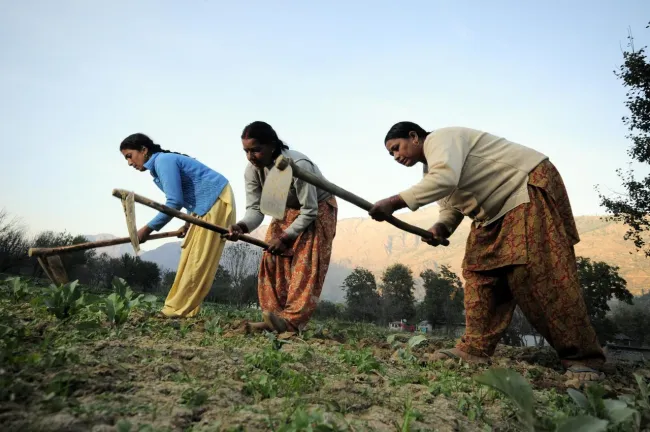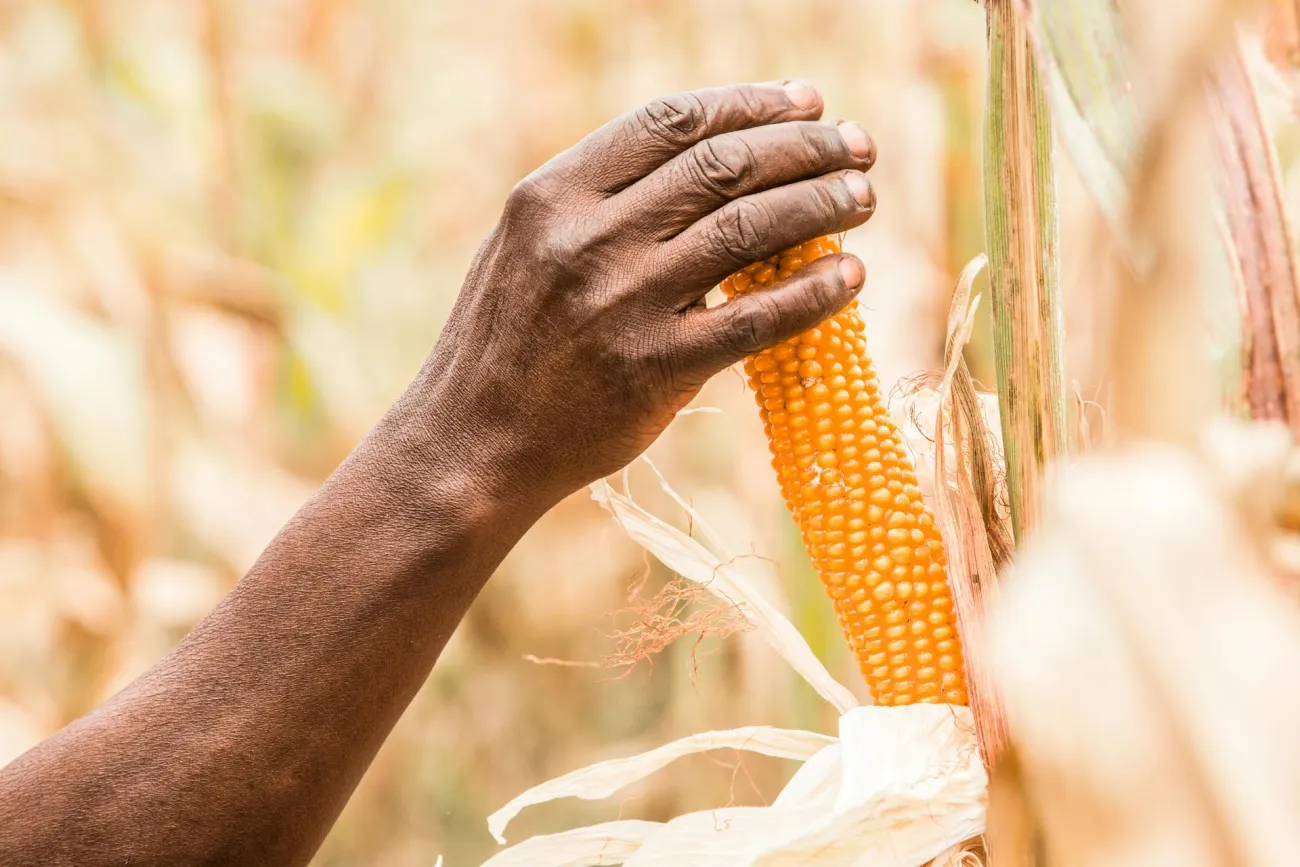This paper calculates country-level mitigation targets for agricultural non-CO2 greenhouse gases (GHGs) based on a variety of allocation methods. This study claims to be the first to calculate national mitigation contributions for the agricultural sector that are consistent with meeting the 2°C target.

The global total by which agriculture must reduce its emissions in 2030, compared to business as usual, is taken to be approximately 1.0 Gt CO2e (based on Wollenberg et al., 2016). Wollenberg et al. (2016) find that the reductions needed in agricultural non-CO2 emissions are almost the same in both 1.5°C and 2°C scenarios, because the 2°C scenarios already use up most of the possible reductions in agricultural non-CO2 emissions. Only non-CO2 GHGs are considered because of variability and lack of data on soil carbon, on-farm biomass and carbon sequestration.
The nine different allocation methods used are:
- Responsibility (countries with higher historical emissions have to make larger emissions reductions), based on:
- Their cumulative emissions from all sectors over 1890–2010, or
- Their cumulative agricultural emissions from 1960–2010
- Capability, according to cumulative agricultural emissions from 1960–2010 and also:
- Gross domestic product in 2010, or
- Human development index in 2010
- Equality
- Equal agricultural emissions per capita, with convergence by 2030
- Equal agricultural emissions per capita, with convergence by 2050
- Responsibility, capability and need as indexed by the Climate Equity Reference Calculator
- Equal cumulative agricultural emissions per capita
- 1960–2030
- 1960-2050
The results are shown for each scenario in the figure below, where red indicates a reduction in emissions and blue indicates an increase in emissions. Approaches based on historical responsibility give higher mitigation targets to developed countries and lower mitigation targets to developing countries, as do approaches based on capability and the approach based on a composite index of responsibility, capability and need. Approaches based on equal agricultural emissions per capita (cumulative or yearly) permit some (mainly developing) countries to actually increase their agricultural emissions, whereas countries with low populations relative to livestock populations (such as Brazil, the United States, Argentina and Australia) would have to make sharper cuts.

For comparison, the paper also calculated mitigation targets based on economic efficiency. Marginal abatement cost curves were used to identify the most cost-effective methods of cutting emissions, which are used first, followed by the more expensive methods. Compared to the targets based on economic efficiency, the allocation method that gave the most similar results was cumulative agricultural emissions since 1960 (option b in the figure above). Targets based on cost-effectiveness would hand much of the mitigation effort to India and nearby countries, as well as some to China and nearby countries. The paper does not state why this is. All other approaches, including those based on equal emissions or equal cumulative emissions per capita, would be more expensive than approaches based on economic efficiency.
If all countries picked the least ambitious of their possible targets, global agricultural emissions would increase 1.9 Gt CO2e per year above 2030 baseline; if they picked the most ambitious, those emissions would fall 4.6 Gt CO2e below the 2030 baseline. Only a few countries have included specific agricultural targets as part of their Intended Nationally Determined Contributions, but all exceed the suggested targets here. While most countries do include agricultural emissions within the scope of their overall mitigation targets, India excluded agriculture from its mitigation targets (see the footnote in this letter from India’s Ministry of Environment and Forests). This is consistent with the equal emissions approaches (cumulative or yearly) in this paper, because those approaches allow India to increase its agricultural emissions.
A weakness of this paper is that it allocates based on production, not consumption, which penalises major food exporters. It also permits some countries to increase their emissions where it may not actually be practical, e.g. due to water restriction in Saudi Arabia. The authors conclude that developed countries should provide financial support for developing countries to meet mitigation goals as well as reducing their own emissions.
Abstract
Globally, agriculture and related land use change contributed about 17% of the world’s anthropogenic GHG emissions in 2010 (8.4 GtCO2e yr−1), making GHG mitigation in the agriculture sector critical to meeting the Paris Agreement’s 2°C goal. This article proposes a range of country-level targets for mitigation of agricultural emissions by allocating a global target according to five approaches to effort-sharing for climate change mitigation: responsibility, capability, equality, responsibility-capability-need and equal cumulative per capita emissions. Allocating mitigation targets according to responsibility for total historical emissions or capability to mitigate assigned large targets for agricultural emission reductions to North America, Europe and China. Targets based on responsibility for historical agricultural emissions resulted in a relatively even distribution of targets among countries and regions. Meanwhile, targets based on equal future agricultural emissions per capita or equal per capita cumulative emissions assigned very large mitigation targets to countries with large agricultural economies, while allowing some densely populated countries to increase agricultural emissions. There is no single ‘correct’ framework for allocating a global mitigation goal. Instead, using these approaches as a set provides a transparent, scientific basis for countries to inform and help assess the significance of their commitments to reducing emissions from the agriculture sector.
Key policy insights
- Meeting the Paris Agreement 2°C goal will require global mitigation of agricultural non-CO2 emissions of approximately 1 GtCO2e yr−1 by 2030.
- Allocating this 1 GtCO2e yr−1 according to various effort-sharing approaches, it is found that countries will need to mitigate agricultural business-as-usual emissions in 2030 by a median of 10%. Targets vary widely with criteria used for allocation.
- The targets calculated here are in line with the ambition of the few countries (primarily in Africa) that included mitigation targets for the agriculture sector in their (Intended) Nationally Determined Contributions.
- For agriculture to contribute to meeting the 2°C or 1.5°C targets, countries will need to be ambitious in pursuing emission reductions. Technology development and transfer will be particularly important.
Reference
Richards, M.B., Wollenberg, E. and Van Vuuren, D., 2018. National contributions to climate change mitigation from agriculture: allocating a global target. Climate Policy, pp.1-15.
Read the full paper here. See also the Foodsource resource How can we reduce food-related greenhouse gas emissions?




Comments (0)